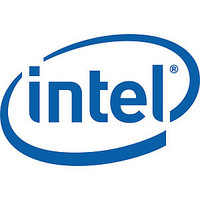RD48F2000P0ZBQ0 Intel Corporation, RD48F2000P0ZBQ0 Datasheet - Page 65

RD48F2000P0ZBQ0
Manufacturer Part Number
RD48F2000P0ZBQ0
Description
Intel StrataFlash Embedded Memory
Manufacturer
Intel Corporation
Datasheet
1.RD48F2000P0ZBQ0.pdf
(102 pages)
- Current page: 65 of 102
- Download datasheet (2Mb)
Caution:
Note:
11.3.4
11.4
Datasheet
Two basic sequences repeat in this phase: loading of the write buffer, followed by buffer data
programming to the array. For BEFP, the count value for buffer loading is always the maximum
buffer size of 32 words. During the buffer-loading sequence, data is stored to sequential buffer
locations starting at address 0x00. Programming of the buffer contents to the flash memory array
starts as soon as the buffer is full. If the number of words is less than 32, the remaining buffer
locations must be filled with 0xFFFF.
The buffer must be completely filled for programming to occur. Supplying an address outside of the
current block's range during a buffer-fill sequence causes the algorithm to exit immediately. Any
data previously loaded into the buffer during the fill cycle is not programmed into the array.
The starting address for data entry must be buffer size aligned, if not the BEFP algorithm will be
aborted and the program fails and (SR[4]) flag will be set.
Data words from the write buffer are directed to sequential memory locations in the flash memory
array; programming continues from where the previous buffer sequence ended. The host
programming system must poll SR[0] to determine when the buffer program sequence completes.
SR[0] cleared indicates that all buffer data has been transferred to the flash array; SR[0] set
indicates that the buffer is not available yet for the next fill cycle. The host system may check full
status for errors at any time, but it is only necessary on a block basis after BEFP exit. After the
buffer fill cycle, no write cycles should be issued to the device until SR[0] = 0 and the device is
ready for the next buffer fill.
Any spurious writes are ignored after a buffer fill operation and when internal program is
proceeding.
The host programming system continues the BEFP algorithm by providing the next group of data
words to be written to the buffer. Alternatively, it can terminate this phase by changing the block
address to one outside of the current block’s range.
The Program/Verify phase concludes when the programmer writes to a different block address;
data supplied must be 0xFFFF. Upon Program/Verify phase completion, the device enters the
BEFP Exit phase.
BEFP Exit Phase
When SR[7] is set, the device has returned to normal operating conditions. A full status check
should be performed at this time to ensure the entire block programmed successfully. When exiting
the BEFP algorithm with a block address change, the read mode will not change. After BEFP exit,
any valid command can be issued to the device.
Program Suspend
Issuing the Program Suspend command while programming suspends the programming operation.
This allows data to be accessed from the device other than the one being programmed. The
Program Suspend command can be issued to any device address. A program operation can be
suspended to perform reads only. Additionally, a program operation that is running during an erase
suspend can be suspended to perform a read operation (see
Flowchart” on page
Intel StrataFlash
Order Number: 306666, Revision: 001
86).
®
Embedded Memory (P30)
Figure 41, “Program Suspend/Resume
1-Gbit P30 Family
April 2005
65
Related parts for RD48F2000P0ZBQ0
Image
Part Number
Description
Manufacturer
Datasheet
Request
R

Part Number:
Description:
Intel 82550 Fast Ethernet Multifunction PCI/CardBus Controller
Manufacturer:
Intel Corporation
Datasheet:

Part Number:
Description:
Intel StrataFlash memory 32 Mbit. Access speed 120 ns
Manufacturer:
Intel Corporation
Datasheet:

Part Number:
Description:
Intel StrataFlash memory 32 Mbit. Access speed 120 ns
Manufacturer:
Intel Corporation
Datasheet:

Part Number:
Description:
Intel StrataFlash memory 64 Mbit. Access speed 150 ns
Manufacturer:
Intel Corporation
Datasheet:

Part Number:
Description:
Intel StrataFlash memory 32 Mbit. Access speed 100 ns
Manufacturer:
Intel Corporation
Datasheet:

Part Number:
Description:
Intel 6300ESB I/O Controller Hub
Manufacturer:
Intel Corporation
Datasheet:

Part Number:
Description:
Intel 82801DB I/O Controller Hub (ICH4), Pb-Free SLI
Manufacturer:
Intel Corporation
Datasheet:

Part Number:
Description:
Intel 82801FB I/O Controller Hub (ICH6)
Manufacturer:
Intel Corporation
Datasheet:

Part Number:
Description:
Intel Strataflash Memory28F128J3 28F640J3 28F320J3
Manufacturer:
Intel Corporation
Datasheet:

Part Number:
Description:
Intel 82550 Fast Ethernet Multifunction PCI/CardBus Controller
Manufacturer:
Intel Corporation

Part Number:
Description:
Intel IXP2325 Network Processor
Manufacturer:
Intel Corporation
Datasheet:

Part Number:
Description:
Intel IXP2400 Network Processor
Manufacturer:
Intel Corporation
Datasheet:

Part Number:
Description:
Intel IXP2805 Network Processor
Manufacturer:
Intel Corporation

Part Number:
Description:
Intel 82801DBM I/O Controller Hub 4 Mobile (ICH4-M), Pb-Free SLI
Manufacturer:
Intel Corporation
Datasheet:










